Growing a pineapple from its leafy top is one of the most enjoyable and surprising gardening experiments you can try at home. It’s simple, cost-effective, and incredibly rewarding. With just a store-bought pineapple and a bit of patience, you can cultivate your own tropical fruit plant right in your backyard or even indoors. Whether you’re an experienced gardener or a curious beginner, this step-by-step guide will walk you through the entire process—from selecting the right fruit to caring for your pineapple plant until it produces a fresh, juicy reward.
Introduction: The Magic of Growing Pineapple at Home
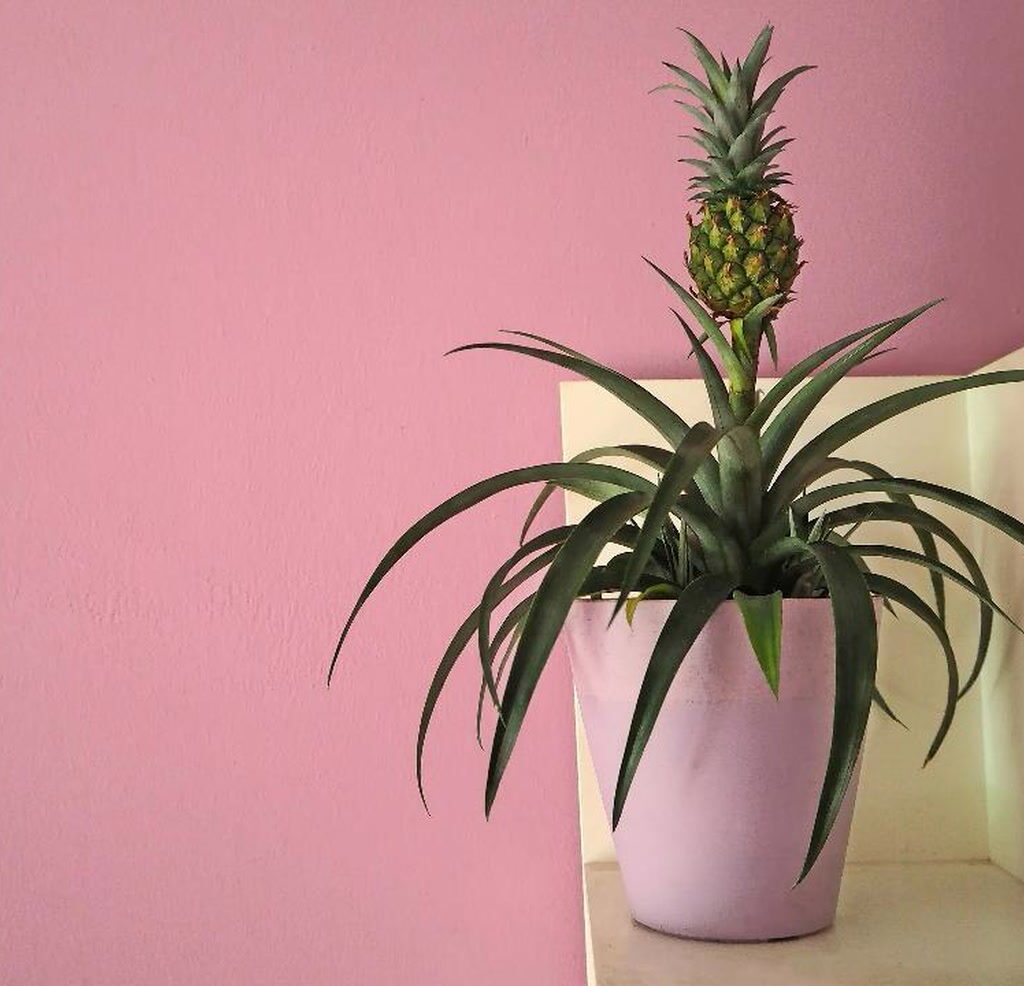
Pineapples (Ananas comosus) are tropical fruits known for their sweet, tangy flavor and spiky green crown. Native to South America, pineapples are now grown in warm regions worldwide. But did you know you can grow your own pineapple plant from the top of a store-bought fruit?
This method, called top propagation, is a fun and sustainable way to start a new plant without seeds. It requires minimal tools and no gardening expertise—just a pineapple, water, and soil. While it may take 18 to 24 months to produce fruit, the journey is a great lesson in patience, plant care, and self-sufficiency.
Materials You Will Need
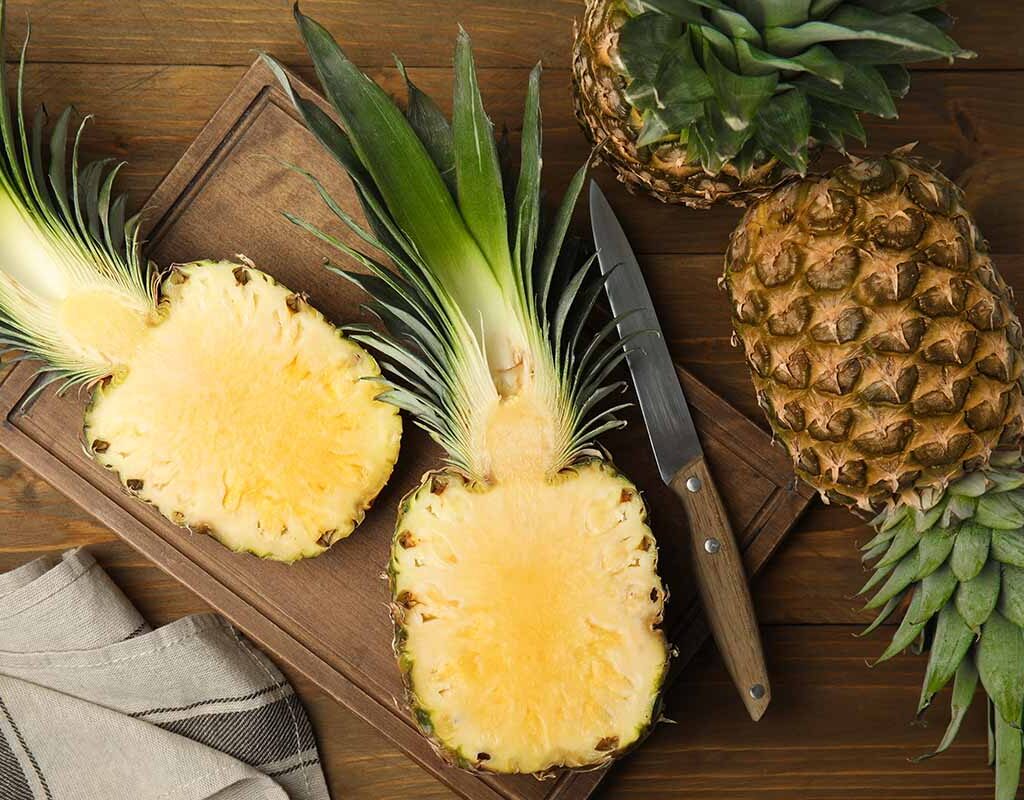
To get started, gather the following items:
- A ripe, healthy pineapple
- A sharp knife
- A glass or jar
- Toothpicks (optional)
- Pot with drainage holes (6–8 inches wide)
- Well-draining potting mix (sandy loam or cactus soil works well)
- Water
Step-by-Step Guide to Planting a Pineapple Top
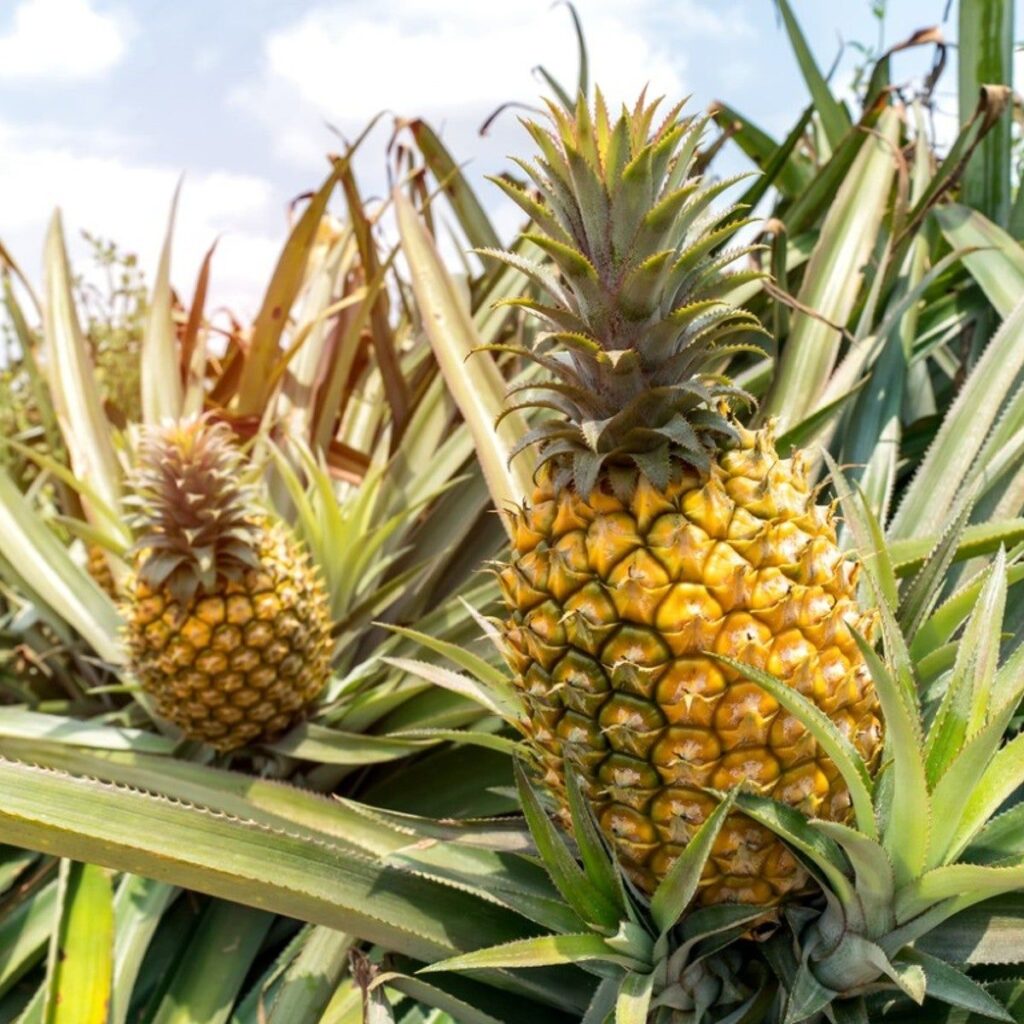
Step 1: Choose the Right Pineapple
Pick a ripe, healthy pineapple with:
- Bright green leaves (not brown or wilted)
- Firm body with no soft spots or mold
- Intact crown (the leafy top) with no signs of rot
Avoid pineapples with yellowing leaves or a soggy base. The success of your plant starts with choosing the right fruit.
Step 2: Remove the Crown
Grip the pineapple crown firmly and twist it off. Alternatively, you can slice off the top about half an inch below the leaves using a sharp knife.
Once separated, remove the small bottom leaves to expose about an inch of the stem. This is where new roots will grow.
Important Tip: Let the crown dry out for 2–3 days before rooting. Place it in a cool, dry spot away from direct sunlight. This helps prevent rot once it’s planted or placed in water.
Step 3: Root the Pineapple Top
There are two ways to root the pineapple top: in water or directly in soil.
Option A: Rooting in Water (Recommended for Beginners)
- Fill a glass with enough water to submerge just the bottom of the stem.
- Place the crown in the glass. You can use toothpicks to suspend it if needed.
- Put the glass in a warm, sunny location.
- Change the water every few days to keep it fresh.
What to Expect: In 2–3 weeks, you’ll see white roots emerging from the base.
Option B: Direct Soil Planting
- Fill a pot with well-draining soil.
- Plant the crown so that the exposed base is covered, and the leaves remain above soil level.
- Water lightly.
- Keep the pot in a warm, bright area (but avoid harsh midday sun for young plants).
With both methods, you should see new leaf growth in a few weeks, which means the plant has taken root.
Step 4: Transplant to a Larger Pot or Ground
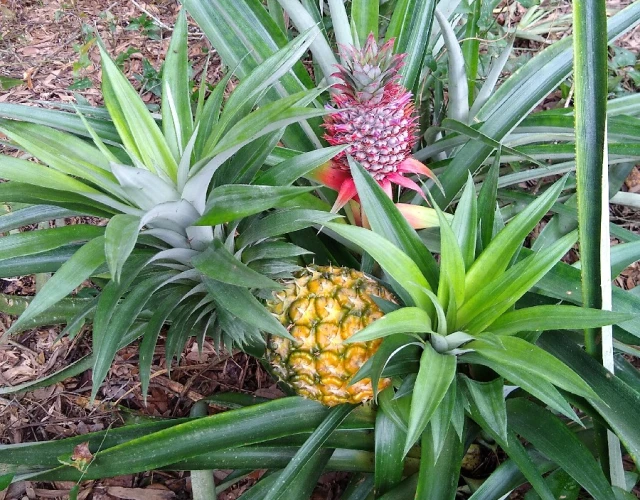
Once your pineapple crown has developed a healthy root system (2–3 inches long), it’s ready for transplanting.
How to Transplant:
- Choose a larger pot or a sunny spot in the garden.
- Fill with nutrient-rich, well-draining soil (a sandy, slightly acidic mix is ideal).
- Dig a small hole and plant the pineapple top, keeping the crown above the soil.
- Water thoroughly and allow it to drain.
If planting outdoors, make sure your climate supports pineapples—ideal temperatures are 65°F to 95°F (18°C to 35°C).
Step 5: Caring for Your Pineapple Plant
Once planted, caring for a pineapple is surprisingly low-maintenance.
Sunlight:
- Pineapples need 6–8 hours of bright light daily.
- Indoors, place near a south-facing window or use grow lights.
Watering:
- Water once a week or when the top 2 inches of soil feel dry.
- Don’t overwater—pineapples are drought-tolerant and hate soggy roots.
- In dry climates, mist the leaves occasionally.
Temperature:
- Pineapples love warmth. Keep them in temperatures above 60°F (16°C).
- Move pots indoors during cold weather if you live in a cooler region.
Fertilizing:
- Feed with a balanced liquid fertilizer every 6–8 weeks during spring and summer.
- Reduce feeding in fall and winter as growth slows down.
Step 6: Encouraging Flowering and Fruiting
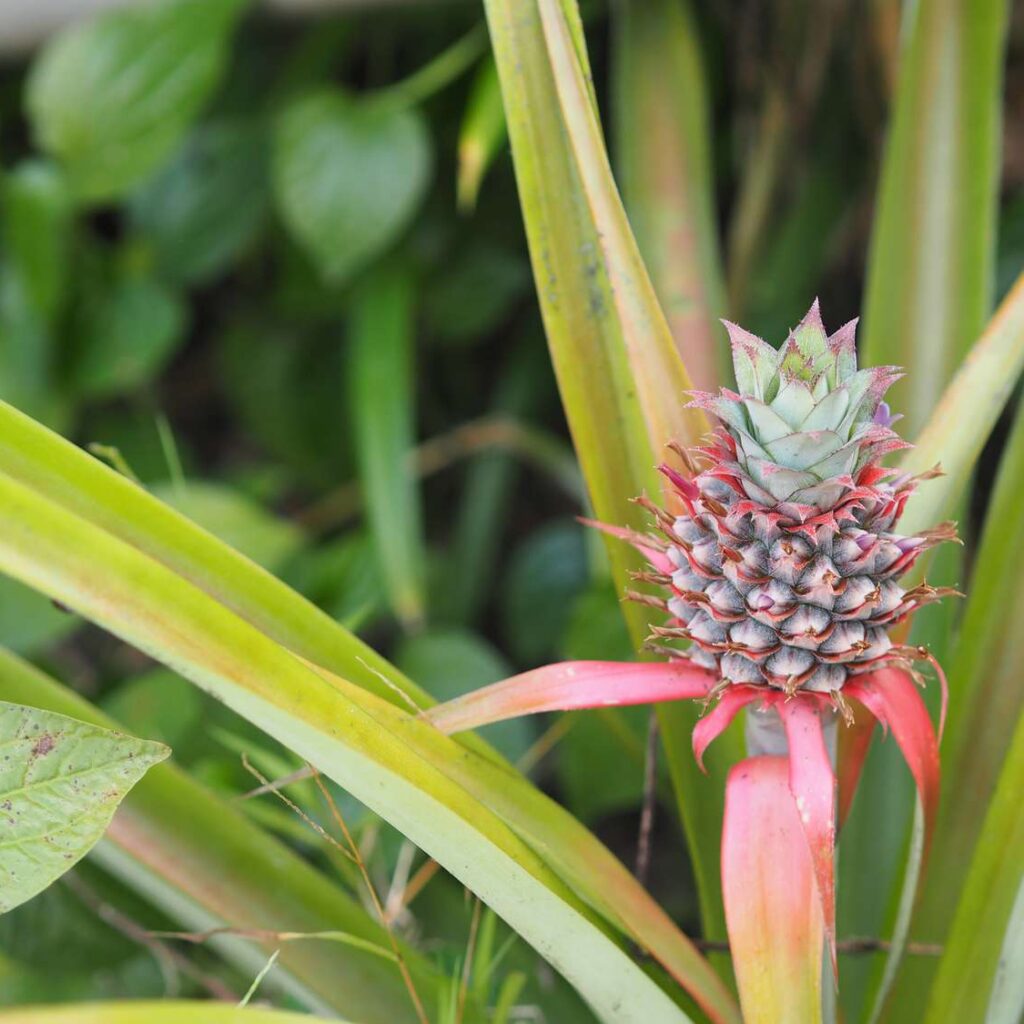
Pineapples typically take 18–24 months to mature and produce fruit. If the plant looks healthy but hasn’t flowered after 2 years, you can encourage it using natural methods.
How to Force Flowering:
- Place the plant in a large plastic bag with a ripe apple for 5–7 days.
- The ethylene gas released by the apple can stimulate blooming.
After flowering, a small pineapple fruit will begin to grow at the center of the plant. Over the next several months, it will mature and ripen—your reward for all your care and patience.
Step 7: Harvesting Your Homegrown Pineapple
When the pineapple turns golden yellow and gives off a sweet aroma, it’s ready to harvest.
- Gently twist or cut the fruit from the stem.
- Let it sit at room temperature for a couple of days to ripen fully, if needed.
Enjoy the fruit—and don’t forget to save the new top to grow another plant!
Troubleshooting Common Problems
1. Crown Rot:
- Occurs when the top is planted too soon or the soil is too wet.
- Prevent it by drying the crown before planting and using well-draining soil.
2. Slow Growth:
- May be due to low light, poor soil, or cool temperatures.
- Ensure the plant is warm and receives ample sunlight.
3. Pest Issues:
- Rare but may include mealybugs or spider mites.
- Treat with neem oil or mild insecticidal soap.
Can You Grow Pineapples Indoors All Year Round?
Yes! Pineapples make excellent indoor container plants. As long as they get enough light and warmth, they will grow happily indoors. In colder regions, bring them inside during the fall and winter to protect from frost.
Growing pineapples indoors also adds a tropical touch to your décor and brings a bit of nature into your living space.
Conclusion: A Fun and Fruity Gardening Adventure
Growing a pineapple from its top is one of the most accessible and enjoyable ways to connect with gardening. It’s a fun project for kids, a conversation starter for adults, and a sustainable way to reduce waste.
With just a little effort, you can transform a grocery store pineapple into a thriving tropical plant—and eventually enjoy your own homegrown fruit. So the next time you cut into a pineapple, don’t toss the top—plant it, care for it, and let your tropical gardening adventure begin.





Leave A Comment